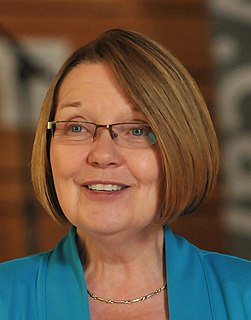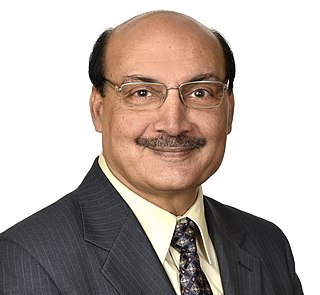Related Research Articles
The Canadian order of precedence is a nominal and symbolic hierarchy of important positions within the governing institutions of Canada. It has no legal standing but is used to dictate ceremonial protocol.

The Legislative Assembly of British Columbia is the deliberative assembly of the Parliament of British Columbia, in the province of British Columbia, Canada. The Legislative Assembly meets in Victoria. Members are elected from provincial ridings and are referred to as members of the Legislative Assembly (MLAs). Bills passed by the legislature are given royal assent by Elizabeth II, Queen of Canada, represented by the Lieutenant Governor of British Columbia.

The leader of the Opposition in British Columbia is the member of the Legislative Assembly (MLA) in the Legislative Assembly of British Columbia who leads the political party recognized as the Official Opposition. This position generally goes to the leader of the largest party in the Legislative Assembly that is not in government.

The Speaker of the Legislative Assembly of British Columbia is the presiding officer of the Legislative Assembly of British Columbia.
Charles Edward Pooley was a lawyer and political figure in British Columbia, Canada. He represented Esquimalt in the Legislative Assembly of British Columbia from 1882 to 1906 as a Conservative.
James Trimble was an Irish-born physician and political figure in British Columbia, Canada. He represented Victoria City in the Legislative Assembly of British Columbia from 1871 to 1878.
John Paton Booth was a Scottish-born political figure in British Columbia. He represented Cowichan from 1871 to 1875, The Islands from 1890 to 1894 and North Victoria from 1894 to 1902 in the Legislative Assembly of British Columbia.
The 5th Legislative Assembly of British Columbia sat from 1887 to 1890. The members were elected in the British Columbia general election held in July 1886. William Smithe formed a government. Following his death in May 1887, Alexander Edmund Batson Davie became premier. After Davie died in 1889, John Robson became premier.
The 7th Legislative Assembly of British Columbia sat from 1894 to 1898. The members were elected in the British Columbia general election held in July 1894. Theodore Davie served as Premier until 1895 when he was named Chief Justice for the Supreme Court. John Herbert Turner succeeded Davie as Premier.
The 10th Legislative Assembly of British Columbia sat from 1903 to 1906. The members were elected in the British Columbia general election held in October 1903. This election was the first in British Columbia to be contested by competing political parties. The British Columbia Conservative Party led by Richard McBride, having won the majority of seats, formed the government.
The 13th Legislative Assembly of British Columbia sat from 1913 to 1916. The members were elected in the British Columbia general election held in March 1912. The British Columbia Conservative Party led by Richard McBride formed the government. McBride resigned as premier in December 1915 to become British Columbia's agent general in London. William John Bowser succeeded McBride as Premier.
The 16th Legislative Assembly of British Columbia sat from 1924 to 1928. The members were elected in the British Columbia general election held in June 1924. The British Columbia Liberal Party, led by John Oliver, formed a minority government. Following Oliver's death in August 1927, John Duncan MacLean became Premier.
The 20th Legislative Assembly of British Columbia sat from 1941 to 1945. The members were elected in the British Columbia general election held in June 1941. The Liberals and Conservatives formed a coalition government led by John Hart. The Co-operative Commonwealth Federation led by Harold Winch formed the official opposition.
The 21st Legislative Assembly of British Columbia sat from 1946 to 1949. The members were elected in the British Columbia general election held in October 1945. The Liberals and Conservatives formed a coalition government led by John Hart. The Co-operative Commonwealth Federation led by Harold Winch formed the official opposition. Hart retired as premier in December 1947 and was replaced by Byron Ingemar "Boss" Johnson.
The 22nd Legislative Assembly of British Columbia sat from 1950 to 1952. The members were elected in the British Columbia general election held in June 1949. The Liberals and Conservatives formed a coalition government led by Byron Ingemar "Boss" Johnson. The Co-operative Commonwealth Federation led by Harold Winch formed the official opposition.
The 25th Legislative Assembly of British Columbia sat from 1957 to 1960. The members were elected in the British Columbia general election held in September 1956. The Social Credit Party led by W. A. C. Bennett formed the government. The Co-operative Commonwealth Federation (CCF) led by Robert Strachan formed the official opposition.
The 31st Legislative Assembly of British Columbia sat from 1976 to 1979. The members were elected in the British Columbia general election held in December 1975. The Social Credit Party led by Bill Bennett formed the government. The New Democratic Party (NDP) led by William Stewart King formed the official opposition. Dave Barrett had lost his seat in the election; he was reelected in a by-election held in June 1976 and resumed his role as party leader.
The 32nd Legislative Assembly of British Columbia sat from 1979 to 1983. The members were elected in the British Columbia general election held in May 1979. The Social Credit Party led by Bill Bennett formed the government. The New Democratic Party (NDP) led by Dave Barrett formed the official opposition.
The 34th Legislative Assembly of British Columbia sat from 1987 to 1991. The members were elected in the British Columbia general election held in October 1986. The Social Credit Party led by Bill Vander Zalm formed the government. Vander Zalm resigned in 1991 after he was found to have put himself into a conflict of interest; Rita Johnston then became Premier. The New Democratic Party (NDP) led by Bob Skelly formed the official opposition.
The 36th Legislative Assembly of British Columbia sat from 1996 to 2001. The members were elected in the British Columbia general election held in May 1996. The New Democratic Party (NDP) led by Glen Clark formed the government. Clark resigned as premier in August 1999; Dan Miller served as interim premier until a leadership election was held in February 2000 where Ujjal Dosanjh became party leader and premier. The Liberals led by Gordon Campbell formed the official opposition.
References
- ↑ "Speakers of the Legislative Assembly of British Columbia 1872-" (PDF). British Columbia legislature. Retrieved 20 June 2014.